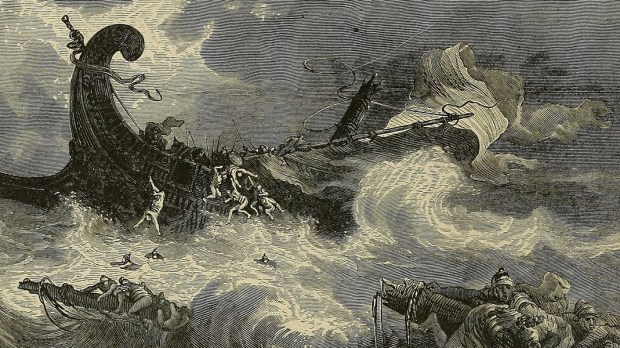When day came they did not recognize the land, but made out a bay with a beach. They planned to run the ship ashore on it, if they could. So they cast off the anchors and abandoned them to the sea, and at the same time they unfastened the lines of the rudders, and hoisting the foresail into the wind, they made for the beach. But they struck a sandbar and ran the ship aground. The bow was wedged in and could not be moved, but the stern began to break up under the pounding [of the waves]. — Acts 27:39-41
In the 27th chapter of the Acts of the Apostles, St. Paul was a prisoner on a ship destined for Rome, to be tried as a political rebel. The narrative documents a powerful storm that would prevent the crew from ever reaching the Italian shore, as they would be shipwrecked on an island they do not recognize at first, but later learn is Malta.
In their struggle to prevent the destruction of the ship, the crew throws out the anchors, which were ultimately abandoned when the ship was lost. For 2,000 years these anchors have been lost to the briny deep, until now. A team of researchers from the Bible Archaeology Search and Exploration (BASE) Institute believe they have identified one of these 1st-century anchors.
In a post from the BASE Institute, they explain that four anchors were discovered by divers in St. Thomas’ Bay in the 1960s. If they are in fact the anchors of St. Paul’s vessel, then their discovery in St. Thomas’ Bay, south of Malta, has already changed what we know of St. Paul’s journey, as it was previously believed that they landed in St. Paul’s Bay, north of Malta.
The Base Institute notes that the sailors who made landfall with St. Paul would have been seasoned seamen who would have recognized the popular ports of Malta, which were located on the North face of the island. That they did not recognize the terrain where they were shipwrecked suggests that they did not land on the North side.
In order to confirm this theory, James Rogers of Fox News reports, BASE utilized a computer system designed for nautical rescue missions to verify the course of the ship. Bob Cornuke, head of the Institute, told Fox:
“The end results of that computer program matched the course of drift as the Bible describes and revealed that the ship of Paul would have impacted on the southeast coast of Malta. The only bay which matched all the criteria in scripture and computer findings was St. Thomas Bay.”
BASE is confident in their findings, but Rogers notes that there are critics who believe the BASE institute may be reaching. BASE admits that the 1st-century artifact could probably use more study, but they seem confident in their assessment. They wrote:
“As with any historical claim, the best we can do is examine the evidence in terms of probability. But the evidence for the anchors of Paul’s shipwreck is virtually overwhelming.”

